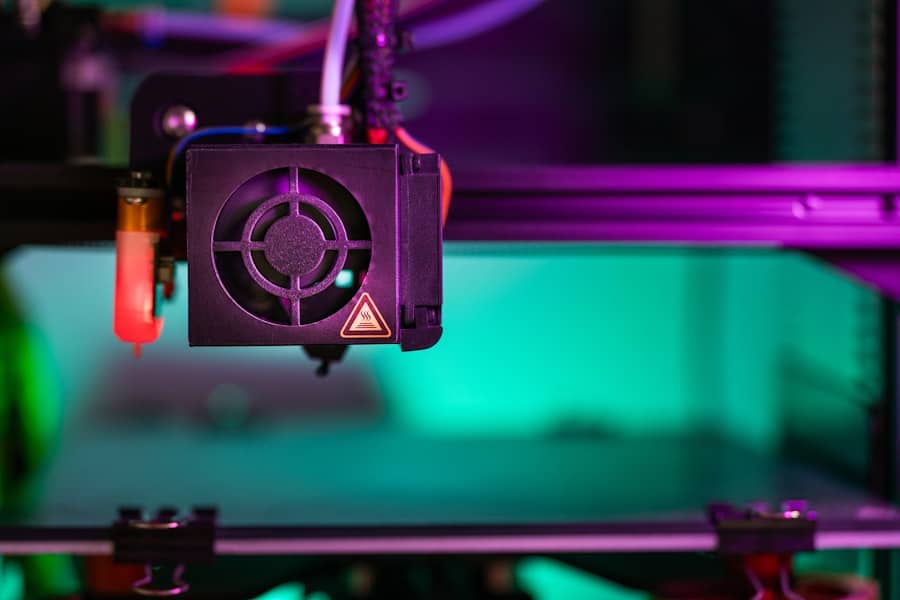The emergence of automated retail stores marks a significant shift in the landscape of consumer shopping. These stores, often characterized by their minimal human interaction, leverage technology to streamline the shopping experience. The concept gained traction in the early 2010s, but it has accelerated dramatically in recent years, particularly in urban areas where convenience and speed are paramount.
Companies like Amazon have pioneered this movement with their Amazon Go stores, which utilize a combination of sensors, cameras, and artificial intelligence to allow customers to shop without traditional checkout processes. Shoppers simply enter the store, select their items, and leave, with their purchases automatically charged to their accounts. This trend is not limited to tech giants; smaller retailers are also exploring automated solutions to enhance efficiency and reduce operational costs.
For instance, companies like Standard Cognition and Zippin have developed systems that enable retailers to implement cashier-less shopping experiences. These innovations cater to a growing consumer demand for convenience, particularly among younger generations who prioritize speed and efficiency in their shopping habits.
Key Takeaways
- Automated retail stores are on the rise, offering convenience and efficiency for customers.
- Advancements in AI and robotics technology have enabled the development of sophisticated automated retail systems.
- The impact on customer experience is significant, with personalized recommendations and seamless transactions.
- Data and analytics play a crucial role in understanding customer behavior and optimizing the automated retail experience.
- Job displacement and ethical considerations are key concerns in the implementation of automated retail stores.
Advancements in AI and Robotics Technology
The backbone of automated retail stores lies in the advancements in artificial intelligence (AI) and robotics technology. AI algorithms are now capable of processing vast amounts of data in real-time, enabling systems to recognize products, track inventory, and analyze customer behavior with unprecedented accuracy. For example, computer vision technology allows cameras installed throughout the store to identify items picked up by customers, while machine learning algorithms can predict shopping patterns based on historical data.
This level of sophistication not only enhances operational efficiency but also provides valuable insights into consumer preferences. Robotics technology has also played a crucial role in the evolution of automated retail. Robots are increasingly being deployed for tasks such as restocking shelves, managing inventory, and even assisting customers in finding products.
Companies like Walmart have experimented with autonomous robots that navigate store aisles to monitor stock levels and ensure shelves are adequately stocked. These advancements not only reduce the burden on human employees but also enhance the overall shopping experience by ensuring that products are readily available when customers need them.
The Impact on Customer Experience
The integration of automation into retail environments has fundamentally altered the customer experience. One of the most significant changes is the reduction of wait times associated with traditional checkout processes. Automated systems allow for a seamless shopping experience where customers can enter a store, select their items, and exit without the need for lengthy queues.
This convenience is particularly appealing to busy consumers who value efficiency in their shopping routines. Moreover, automated retail stores often provide a more personalized shopping experience through the use of data analytics. By tracking customer behavior and preferences, these stores can offer tailored recommendations and promotions that resonate with individual shoppers.
For instance, if a customer frequently purchases organic products, the system can highlight similar items or offer discounts on related goods. This level of personalization not only enhances customer satisfaction but also fosters brand loyalty as consumers feel understood and valued by retailers.
The Role of Data and Analytics
Data and analytics are at the heart of automated retail operations, driving decision-making processes and enhancing overall efficiency. Retailers collect vast amounts of data from various sources, including customer transactions, foot traffic patterns, and inventory levels. This data is then analyzed to identify trends and optimize store layouts, product placements, and marketing strategies.
For example, by analyzing foot traffic data, retailers can determine which areas of the store attract the most customers and adjust product displays accordingly to maximize sales. Furthermore, predictive analytics plays a crucial role in inventory management. Automated systems can forecast demand for specific products based on historical sales data and current market trends.
This capability allows retailers to maintain optimal stock levels, reducing instances of overstocking or stockouts that can lead to lost sales opportunities. By leveraging data effectively, automated retail stores can create a more efficient supply chain while simultaneously enhancing the customer experience through better product availability.
Challenges and Concerns
Despite the numerous advantages associated with automated retail stores, several challenges and concerns must be addressed. One significant issue is the potential for technical malfunctions or system failures that could disrupt operations. For instance, if a store’s automated checkout system experiences a glitch, it could lead to long wait times or even prevent customers from completing their purchases altogether.
Retailers must invest in robust technology infrastructure and contingency plans to mitigate these risks. Additionally, there are concerns regarding privacy and data security in automated retail environments. As these stores collect extensive data on customer behavior and preferences, there is an inherent risk of data breaches or misuse of personal information.
Consumers may be hesitant to engage with automated systems if they feel their privacy is compromised. Retailers must prioritize transparency in their data collection practices and implement stringent security measures to protect customer information.
Job Displacement and Workforce Changes
The Efficiency vs. Employment Debate
While some argue that automation will lead to increased efficiency and cost savings for businesses, others highlight the potential negative impact on employment opportunities. However, it is essential to recognize that automation does not necessarily equate to job elimination; rather, it often leads to a transformation of roles within the industry.
Transforming Roles in Retail
As routine tasks become automated, there is an opportunity for workers to transition into more complex roles that require human skills such as customer service, problem-solving, and emotional intelligence. Retailers may need to invest in training programs to help employees adapt to new technologies and develop skills that complement automated systems.
Upskilling for a Changing Retail Landscape
By investing in employee training and development, retailers can ensure that their workforce is equipped to thrive in an automated retail environment. This shift in focus can lead to a more efficient and effective workforce, where employees are able to focus on high-value tasks that drive business growth and customer satisfaction.
The Future of Retail and Consumer Behavior
The future of retail is poised for significant transformation as automated stores become more prevalent. Consumer behavior is evolving alongside these technological advancements; shoppers increasingly expect convenience, speed, and personalization in their shopping experiences. As automation continues to reshape the retail landscape, businesses must adapt their strategies to meet these changing expectations.
Moreover, the integration of augmented reality (AR) and virtual reality (VR) technologies into automated retail environments could further enhance consumer engagement. Imagine a scenario where customers can use AR applications to visualize how products will look in their homes before making a purchase or VR experiences that allow them to explore virtual showrooms from the comfort of their own homes. These innovations could redefine how consumers interact with brands and products, creating immersive experiences that drive sales.
Ethical Considerations in Automated Retail Stores
As automated retail stores proliferate, ethical considerations surrounding their implementation become increasingly important. One key issue is the potential for bias in AI algorithms used for customer profiling and product recommendations. If these algorithms are not carefully designed and monitored, they may inadvertently reinforce existing biases or exclude certain demographics from targeted marketing efforts.
Additionally, there are ethical implications related to data privacy and consumer consent. Retailers must navigate the fine line between leveraging data for personalized experiences and respecting customers’ rights to privacy. Transparent communication about data collection practices and providing consumers with control over their information are essential steps toward building trust in automated retail environments.
Furthermore, as automation reshapes workforce dynamics, ethical considerations regarding employee treatment must be addressed. Retailers should strive to create an inclusive environment where workers are supported through transitions brought about by automation rather than being left behind. This includes offering retraining programs and ensuring fair labor practices as the industry evolves.
In conclusion, while automated retail stores present numerous opportunities for innovation and efficiency within the retail sector, they also raise important challenges and ethical considerations that must be thoughtfully addressed as we move forward into this new era of consumerism.
A related article to How AI and Robotics Are Shaping the Future of Automated Retail Stores can be found in Hacker Noon’s coverage of a range of topics across the tech sector. This article delves into the various advancements and innovations happening in the technology industry, including the integration of AI and robotics in retail stores. To learn more about the latest trends and developments in the tech sector, check out




